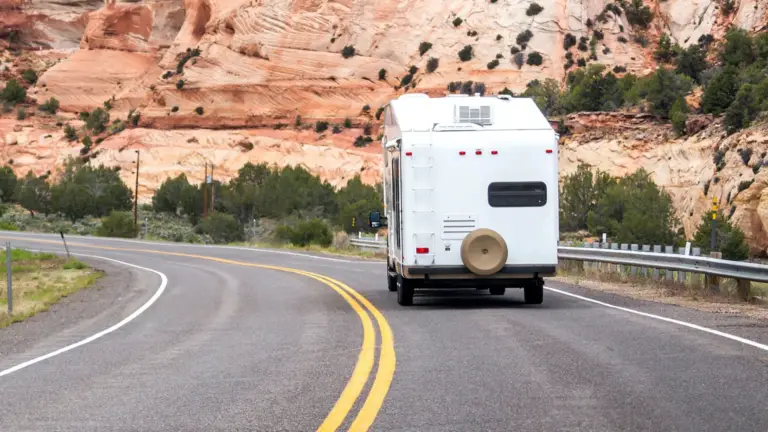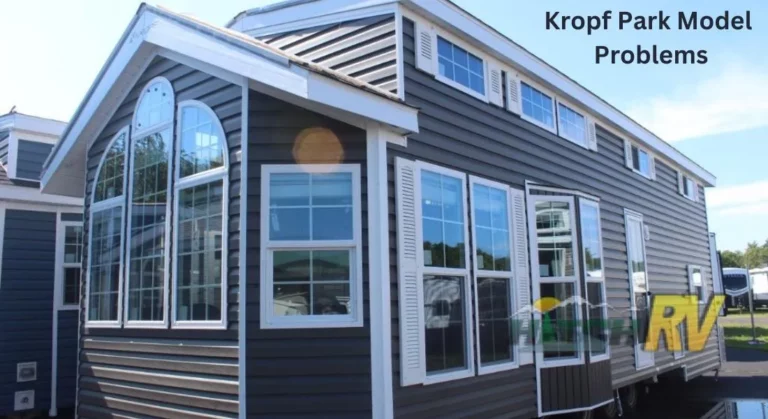5 Problems With Alaskan Campers (Solutions Included)
Hard-sided pop-up truck campers are the specialty of the Alaskan Camper. These slide-in campers are more lightweight, have less wind resistance, and handle bumpy roads better than their rivals.
Still, this camper will disappoint you with the early cover issue, running lights, hydraulic pump issues, electrical problems, water leaking etc.
Common Alaskan Camper Problems and Solutions
| Problems | Solutions |
| Early cabover issue | Seal the holes, replace the bolt |
| Running lights | Check the ground system |
| Hydraulic pump issue | Check the battery voltage |
| Electrical Problem | Check the wiring connections, electrical flow |
| Water leaking | Inspect all the gaskets and seals |

1. Early Cabover Issue
The aluminium siding under the gutter is reversely lapped, meaning the roofing aluminium is tucked under the lap tab rising from the bottom aluminium under the cabover.
This creates a trap for moisture to enter the frame of both the curve and the cabover portion itself.
The Fix
The holes should be sealed and utilize a hanger’s wire portion. Till the sides are completely integrated into the sealant, slide the sealant around inside the hole.
Replace the bolt after adding something to it. Epoxy can be used to fix this better, however, this will prevent water infiltration in the meanwhile.
When tightened, ensure sealant exits the hole on both sides.
2. Running Lights
You will need to find the broken or loose connection between the connector and where it finishes at the front of the vehicle if there is no power on the running light pin.
A loose screw might cause the running light system to fail if it breaks contact.
The Fix
You should always examine your ground system first. Make sure the truck and the camper have a reliable ground connection. With pickup trucks and campers/trailers, that is a typical issue.
A ground wire on clearance lights makes contact with the camper’s skin. Tight the loose screw properly.
3. Hydraulic Pump Issue
Sometimes defective hydraulic pumps are caused by low pump voltage.
The Fix
Verify the battery’s voltage. Once you’ve attempted to start the pump, check the voltage at the pump. You can check the wire to determine if there is a loose wire nut or butt splice if the voltage at the pump is low.
A multimeter (amps, volts, resistance) would be highly beneficial if you don’t have one because it would assist you to figure out your circuits. The use of inexpensive digital multimeters has prevented many of us from losing our jobs.
4. Electrical Problem
Several consumers reported that the house circuit trips the breaker (GFI) or explodes a fuse whenever they put an extension cable into the 110v exterior socket.
The Fix
To guarantee an uninterrupted electric current flow, you can get entry to the circuit box and reset the tripped breaker.
Inspect the connections at the single breaker box, the wiring at the external socket, and that there are no shorts between the input of the breaker box and the external socket.
Check the connections and wiring at the two cone bulbs in the back.
5. Water Leaking
If water is dripping from beneath your camper, the water tank or piping are most likely to blame. Depending on how much is leaking, it can be due to damage to the camper’s flooring or the roof.
The Fix
Check all of the gaskets and seals outside. These are the points where water is most likely to get inside the camper.
The holding tanks should be checked next if the seals and gaskets appear to be in good condition. In most cases, the freshwater tank is situated beneath the camper, so if there is a leak there, water will probably seep into the camper from underneath.
The hose from the freshwater tank should be disconnected, and all faucets should be shut off. Next, look for any evidence of water on the area surrounding the camper.
You’ll need to cut off the water at the campground hookup and then turn on all of the taps inside the camper to check for leaks in these places.
Frequently Asked Questions (FAQs)
An Alaskan camper costs how much?
The cost of an Alaskan Camper is slightly higher than that of a typical truck camper, ranging from just over $37,000 to $42,000. The hydraulic lift system is the major expense therein.
Which country produces Alaskan Campers?
Truck Camper Magazine visits the 60-year-old hard side pop-up truck camper company’s new Winlock, Washington plant almost two years after it was acquired by Alaskan Campers to see what has changed.
How heavy are Alaskan Campers?
Dry weight for Alaskan campers is around 1,680 pounds, and wet weight* is 2,490 pounds.
Conclusion
The legendary customer service is provided by Alaskan Truck Camper. Since its founding in 1955, Alaskan has been a family-run enterprise. Today it seems that providing excellent customer service is a lost art, but not at Alaskan.
If you decide to buy one, research the problems with holding tanks and propane storage. They are not lightweight, so a three-quarter-ton or one-ton truck is recommended. They are also not inexpensive; expect your pocketbook to take a hit.
The appeal of the hard-side pop-up feature, to begin with, cannot be overstated. It’s the primary, secondary, and tertiary justification for many consumers in choosing an Alaskan.
Related Posts:


